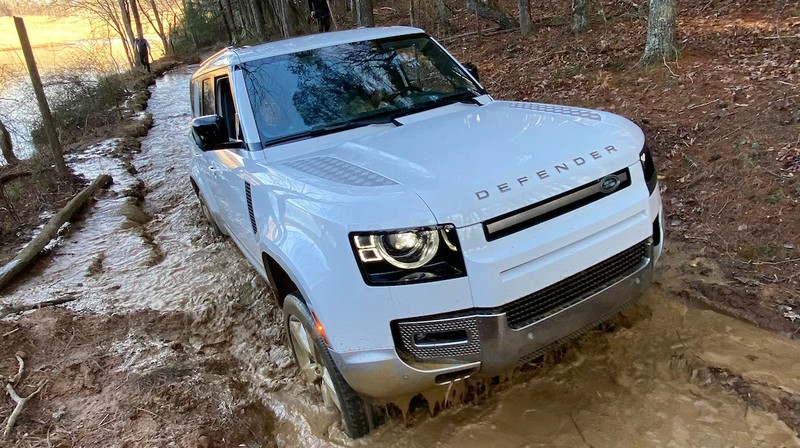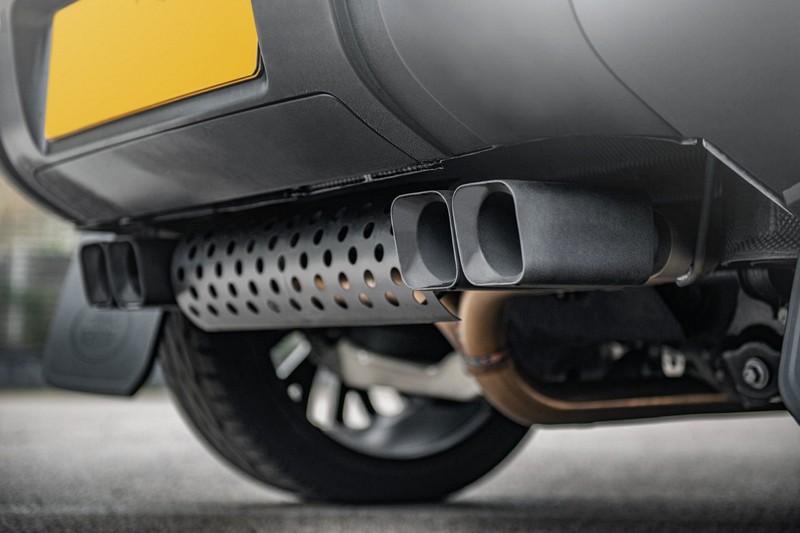It has the same Defender capability, but with a more civilized third-row seat.
We love the Land Rover Defender—it was named our 2021 SUV of the Year upon its return to the U.S. market after leaving way back in the mid-1990s. The icon was resurrected as the 2020 Land Rover Defender 110, a perfectly sized midsize SUV with an optional third row no one should spend much time in. The following year, Defender aficionados eagerly greeted the arrival of the Defender 90, the shorter-wheelbase, two-door SUV fashioned after the original 4×4’s basic format (even if it’s much larger and more luxurious today). A rarity at this price point and size category, the 90 appeals to about 10 percent of Defender buyers; the V-8 that Land Rover later added to the Defender’s roster of four- and six-cylinder engines has even narrower appeal.
The newest Defender family addition should have longer appeal—literally. The 2023 Land Rover Defender 130 extends the SUV to address a crucial pinch point: the 110’s available third-row seat. The 130 has the same wheelbase as the 110 but cantilevers an extra 13.4 inches of body length behind its rear wheels, making the third row a far nicer place to occupy with more room, a window, and a glass roof to stave off claustrophobia.
Groomed For More Room
We lined up three men, all over 6 feet tall, and had them sit behind each other. All three had ample headroom and enough legroom that no one’s knees hit the seat in front of them. Although it’s infinitely better, the third row isn’t perfect. It is easier to clamber into than the 110’s, but that’s not a high bar. The nimble will have no problem, but the less coordinated or larger passengers might still find the opening a bit tight. And while the third row is definitely more spacious, the wheel wells intrude into the cabin enough that passengers have to bend their feet around it.
The biggest surprise (and letdown) is that the 130’s second- and third-row seats don’t fold completely flat. Tilt those seatbacks forward, and you create a tiered cargo area. Viewed from behind the vehicle, with the tailgate open, you see a bump, then an uneven level for the folded-down third row, another bump, and yet another level for the second row, which rests on a bit of an incline. The result is there’s more overall cargo room in the 130—88.9 cubic feet—but it’s not arranged on a perfectly flat floor, so sliding stuff in will prove challenging.
Another bummer? The Defender 130 isn’t offered with the V-8 engine like the smaller 110 and 90 models are. Its two mild hybrid engine choices are shared with other Defenders. The Defender 130 P300 has the lower-output 3.0-liter Ingenium I-6 engine that produces 296 horsepower and 295 lb-ft, while the P400 gets the high-output 395-hp, 406-lb-ft I-6. Both are paired with an eight-speed automatic transmission.
Defender Is As Defender Does
We drove an $87,375 Sedona Red (new exclusive color) Defender 130 P400 SE with the high-output engine and an ebony interior. Given that it has the same wheelbase, unibody structure, suspension, and powertrain as the shorter Defender 110, the 130 drives much the same.
You can feel the extra size of the vehicle at slower speeds. There’s a bit of a lag when you step on the accelerator, though once up at cruising and highway speeds, engine response perks up noticeably. The SUV’s extra length and weight are otherwise barely noticeable on paved roads, especially the predominantly on-road driving we did from North Carolina to Meadows of Dan in Virginia and then to a third destination back in North Carolina. Slowing to a stop, you are reminded again of the 130’s additional mass.
We’re not fans of the stubby gearshift lever, which is a bit finicky and makes it harder than necessary to find the right gear, especially when seeking neutral on the fly in order to switch into four low. And you may find yourself in that predicament often, because the Defender really shines off-road. We spent a day at one of three Land Rover Experience Centers in the U.S., in this case on the Biltmore Estate in Asheville, North Carolina, exercising its permanent four-wheel drive, two-speed transfer case, locking rear and center differentials, and standard air suspension.
The 130’s 38-degree approach angle is the same as the 110‘s; it’s the departure angle with the longer back end you must be mindful of, as the loaded-diaper tail limits this dimension to 28.5 degrees. It was never an issue on a course with some gnarly obstacles, deep water fording—the SUV can wade through 35 inches of water—and great off-camber sections designed to twist the frame and send wheels high into the air. All the good stuff. The course’s ground froze overnight, but rapidly rising daytime temperatures quickly thawed the hard clay, which became greasy mud; but it was no match for the Defender. No winches were needed all day, though a few times we tested the underbody protection without ever being in danger of teeter-tottering. On narrower portions of the trail, we noticed the mirrors don’t fold in as close to the body as we’d hoped; in fact, they barely fold in at all, almost making it not worth it to even bother.
Tricky climbs and descents were dispatched without issue in four low, activated by putting the SUV in neutral and hitting a button. Press the Terrain Response button, and the mode menu appears on the center screen. Mud was the best choice for most of the terrain we covered, though in one climb up a series of rock faces and boulders, we started in Drive and Auto and then switched to Rock Crawl halfway up for an aggressive mix of braking and traction. It worked, but it felt like we had to push through a force field of brakes, making travel more jerky; we eventually switched back to Auto. Throw the transmission into manual, select S1, and lift your foot off the brake for hill descent control.
The independent multilink front and rear suspension with height-adjustable air springs can elevate the 8.5-inch baseline ground clearance to 11.5 inches. The air springs provide a surprising amount of articulation and prove capable of cushioning the ride on all surfaces and at all heights.
A camera view helps the driver see the trail ahead with a second view that can be enlarged to show the position of the tire where it meets the ground. The ClearSight see-through hood uses a downward-looking camera to make it appear as if you are looking through the hood to the ground below to see wheel placement over obstacles in real time. If this sounds perhaps too cool for Land Rover, with its history of buggy infotainment systems, know that the automaker has worked to make a more robust system, using a more advanced electronic architecture, and we had no issues over the course of three days.
So, the Defender 130 is a real Defender, even if it looks sort of odd and is larger than its siblings. Land Rover executives say the Defender 130 could account for as much as 25 percent of the mix. All versions come from the same plant in Nitra, Slovakia, which can easily adapt to demand for each variant. The P300 starts at $69,475; the P400 starts at $79,775, and our SE, a relatively low trim level, with assorted goodies came to $87,3765. There are some Defender 130s in stock, but many customers will order and wait. Traditionally the Land Rover Range Rover Sport is the brand’s top seller but in 2022, it was the Defender family that sold the most in the U.S.
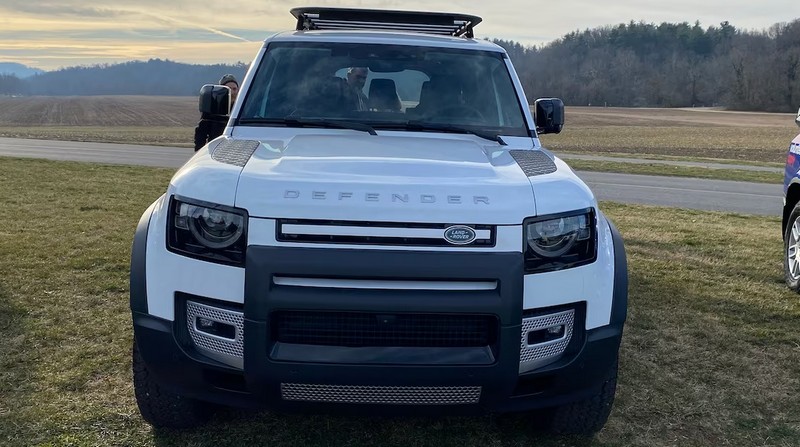
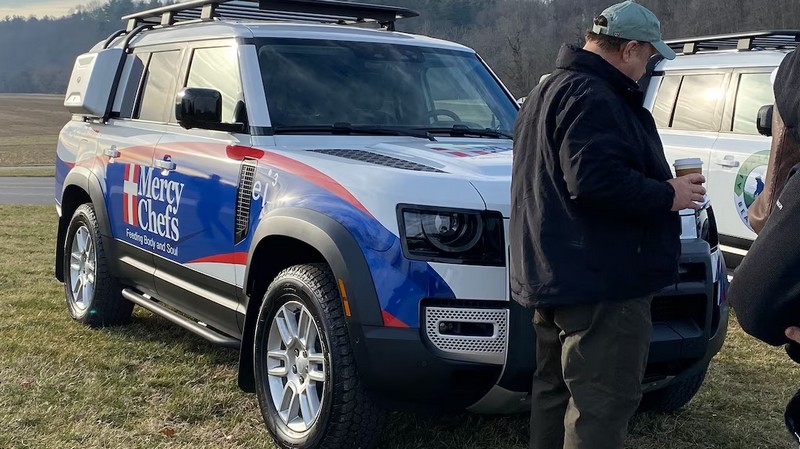
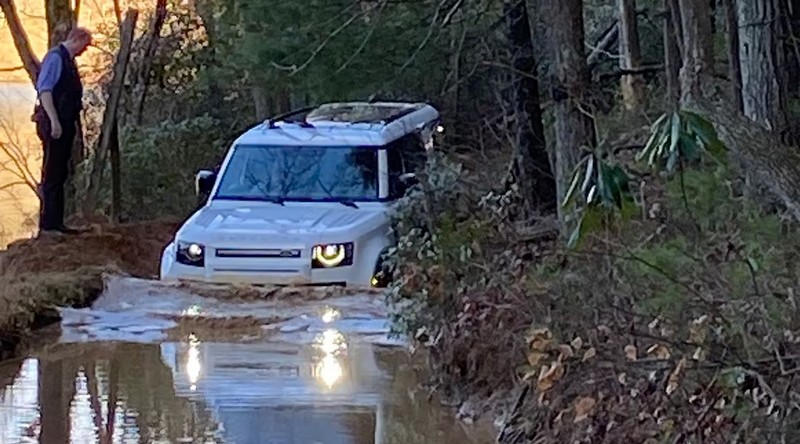
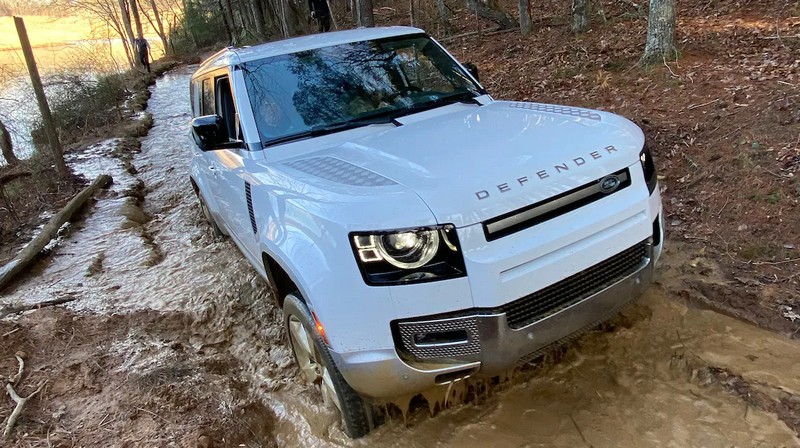
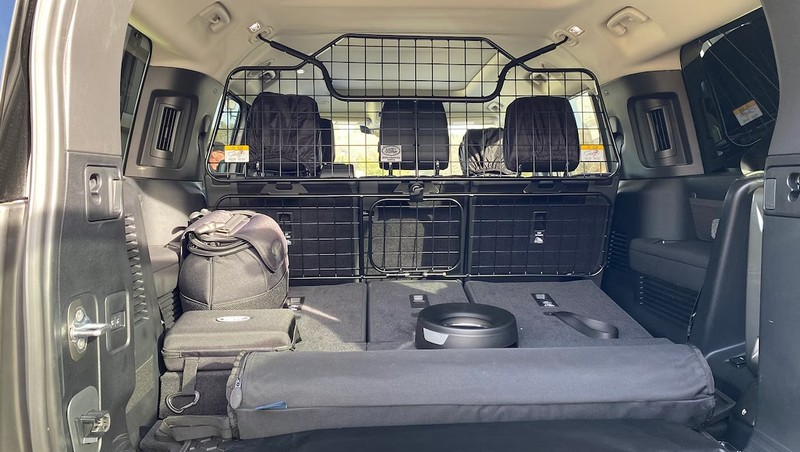

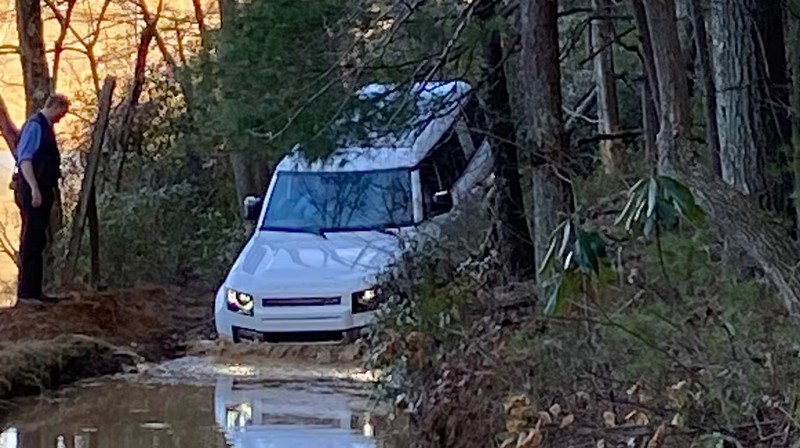
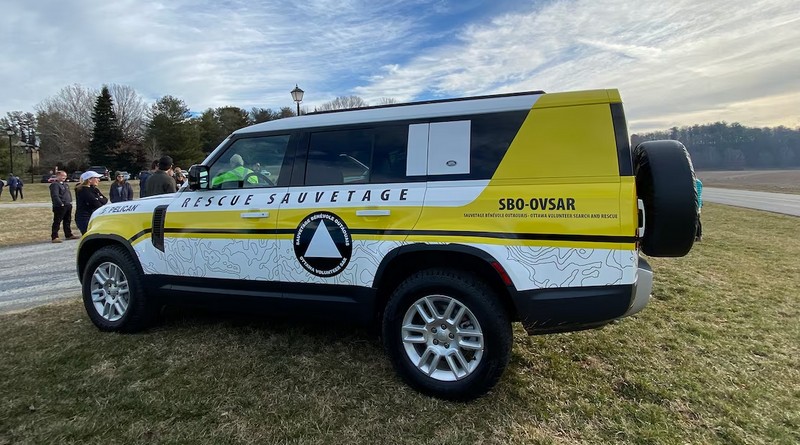

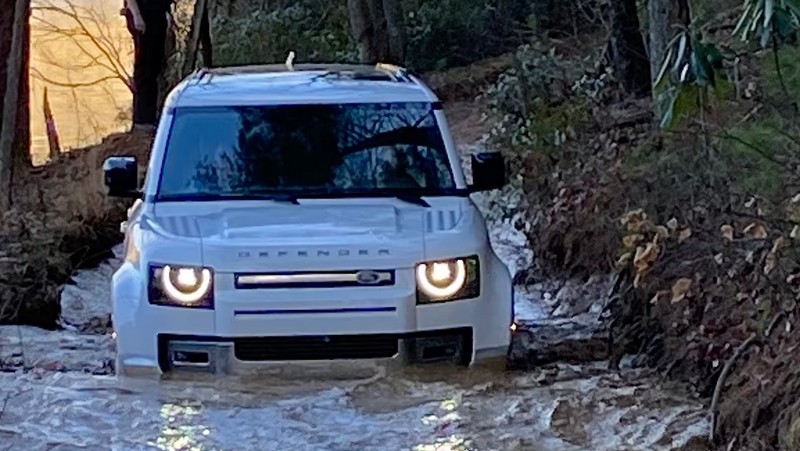
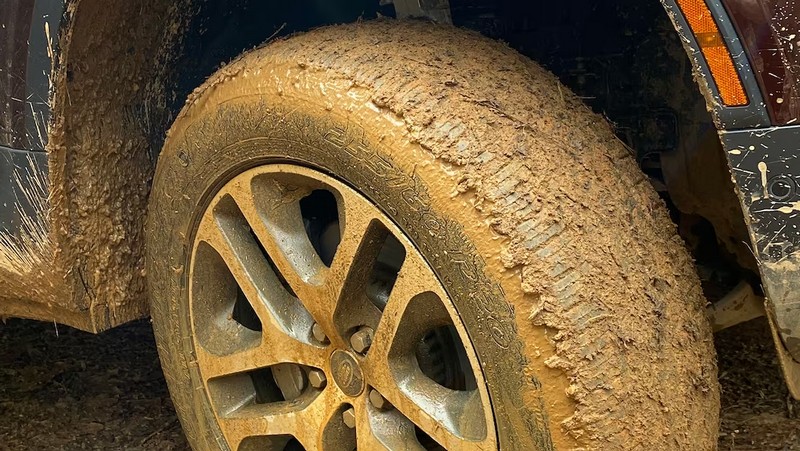

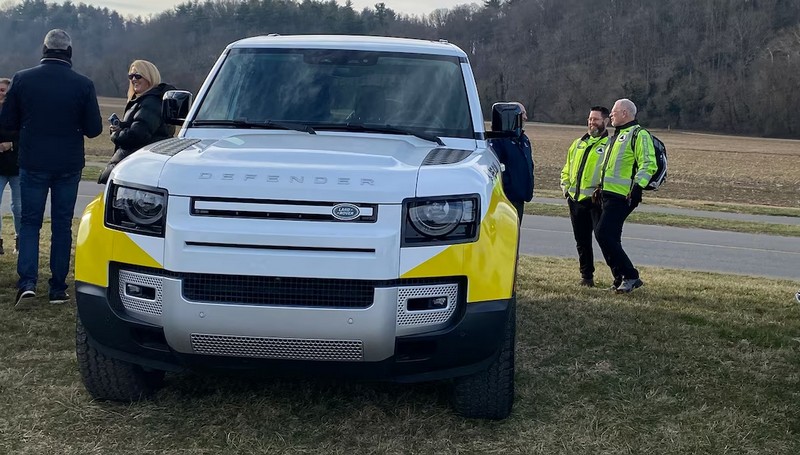
Article Credits: Alisa Priddle
Full Articles: https://www.motortrend.com/reviews/2023-land-rover-defender-130-first-drive-review/

